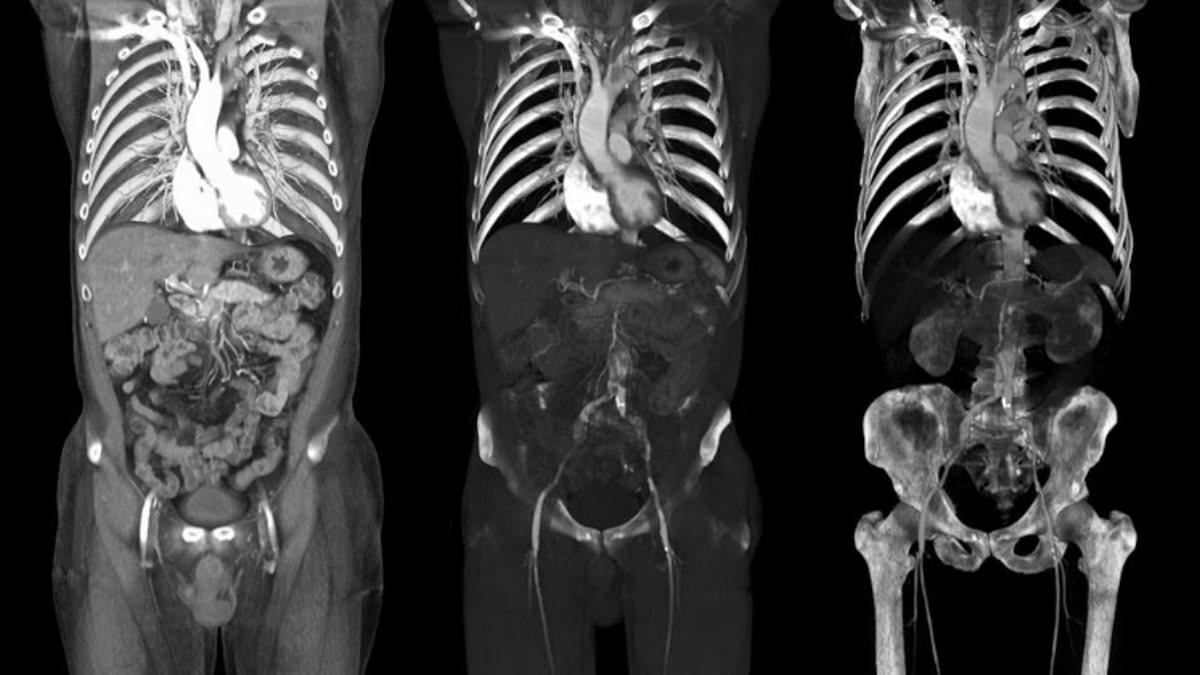A major scientific review may have found a possible cause of many of the cancers for which genetics, diet and lifestyle cannot explain.
After reviewing more than 3,000 studies on microplastics, researchers concluded that these tiny toxins are linked to lung and colon cancer, as well as other lung diseases and infertility.
That could be significant because, unlike dozens of cancers that are in decline, colon cancers are rising, especially among young people who are not normally at risk.
Likewise, lung cancers not caused by tobacco are also on the rise, a trend which has also baffled experts.
Microplastics are pieces of plastic smaller than 5mm in diameter that are released by consumer goods like food containers, clothes toys, packaging, cigarette filters and tires.
They’ve contaminated the air we breathe, food we eat and water we drink and have been found in virtually every major human organ, where they cause widespread inflammation when the immune system recognizes it as a foreign invader.
This can cause a myriad of medical problems, including tissue damage and inflammation in the liver and heart, and over time, accumulation in the body can lead to irreversible damage.
The California researchers concluded exposure to microplastics is ‘suspected’ to play a role in colon cancer, ovarian function, sperm quality and respiratory diseases, including lung cancer.

Researchers have linked microplastics to lung and colon cancer, as well as other lung diseases and infertility (stock image)


Californian Raquel (left) was 28 when doctors diagnosed her with stage four colon cancer. Alabama native Evan White (right) was diagnosed with colon cancer at 24. He died four years later, just weeks before his wedding
Previous studies have even discovered the substances in people’s brains and a woman’s placenta and estimate exposure to microplastics costs the US healthcare system $289billion annually.
And with plastic production expected to triple by 2060, the UC researchers said: ‘Due to ubiquitous exposure and bioaccumulative characteristics of microplastics, the extent of human health impacts due to microplastic exposure is of great concern.’
The review, published earlier this month in ACS Publications Environmental Science & Technology, analyzed approximately 3,000 animal and human studies that researched an association between microplastic exposure and health outcomes in the respiratory, digestive and reproductive systems.
The studies suggested a strong link between microplastics and changes in the digestive system and colon cancer, as the tiny particles disrupt the protective mucus layer in the colon and potentially promote tumor development.
The researchers wrote: ‘We concluded that exposure to microplastics is “suspected” to adversely impact the colon and small intestine in humans.’
They also wrote microplastics are ‘suspected’ of causing intestinal cell death and chronic inflammation, as well as negatively impacting the intestinal immune system.
Overall, researchers said: 'Across the outcomes, we identified that exposure to microplastics is “suspected” to be a digestive hazard to humans, including a suspected link to colon cancer, using the key characteristics of carcinogens approach.'
Microplastics are also suspected of impacting fertility, as they can potentially impact the hormonal balance in the reproductive system, damaging sperm quality and count in males, and affecting the function of the ovaries and placenta in females.
One of the studies found an association between microplastics detected in placenta and low birth weight, while another discovered a link between microplastics in amniotic fluid and pre-term birth.
And microplastics exposure is linked to adverse ovarian function and development.
Additionally, the review said: 'We concluded that exposure to microplastics is “suspected” to adversely impact sperm quality and testicular health in humans.'
The UC team also discovered an association between microplastics and poor lung function, with the particles causing inflammation in the airways.
The particles cause lung injury and chronic pulmonary inflammation, which can increase the risk of lung cancer.

Carly Barrett, from Kentucky, was diagnosed with colon cancer at age 24 after detecting blood in her stool and suffering from abdominal pain
The researchers added: 'Across the outcomes that were fully evaluated, we identified that exposure to microplastics is “suspected” to be a hazard to the human respiratory system.'
Commenting on the findings, Senior author Tracey J. Woodruff, a professor of obstetrics, gynecology and reproductive sciences at UCSF, said: 'These microplastics are basically particulate matter air pollution, and we know this type of air pollution is harmful.'
The researchers wrote: 'Microplastics are widespread and mobile in the environment, being detected in air, surface water, costal beaches, sediment, and food.
'They have been discovered in remote and pristine locations, including the Antarctic, deep ocean trenches, and Arctic sea ice.
'Due to their small size, microplastics more easily enter and are distributed in the human body in comparison to larger particles; microplastics have been measured in human placenta, breastmilk, and liver.'
Each year, companies around the world produce nearly 460million metric tons of plastic. That is projected to reach 1.1 billion by 2050.
The paper is the first systematic review of microplastics using gold standard methods approved by the National Academy of Sciences.


Dr Bryant Lin, a primary care physician and professor at Stanford, was studying a mystery rise in lung cancers in nonsmokers... then he got the very disease he'd been investigating
Most of the studies in the review were based on animals, but the researchers said the conclusions likely also apply to humans since they share many of the same exposures.
The study expands on a report the researchers worked on last year with the California State Policy Evidence Consortium (CalSPEC).
The Consortium includes experts across the UC system and provides evidence for policymakers in the California State Legislature.
'We urge regulatory agencies and policy leaders to consider the growing evidence of health harms from microplastics, including colon and lung cancer,' said Nicholas Chartres, PhD.
Chartres, the study's first author, led the science and policy team at PRHE and is now at the University of Sydney.
'We hope state leaders will take immediate action to prevent further exposures.'
